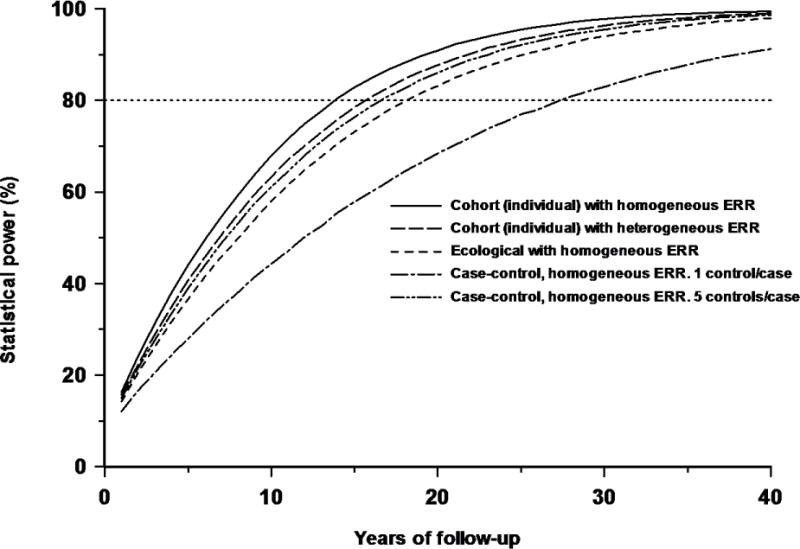Figure 1.

Influence of heterogeneity of excess relative risk (ERR) in a cohort on the power of a study to detect an increasing trend of risk with dose, and comparison with power of a geographical correlation study and a case-control study with one or five controls per case and the same excess odds ratio (EOR), all as a function of years of follow-up in a GB population. Five curves are presented: for a cohort with assumed homogeneous ERR of 32.15 Sv−1, for a cohort with assumed heterogeneous ERR (see text), for an ecological (geographical correlation) study based on county district averages with a homogeneous ERR of 32.15 Sv−1, and for a case-control study (with one or five controls per case) with the same (homogenous) EOR. The power illustrated is to detect a statistically significant (1-sided p=0.05) increasing trend of risk with dose, assuming distributions for RBM doses as in Table A2, and case distribution per year in the GB as in Table A4.
